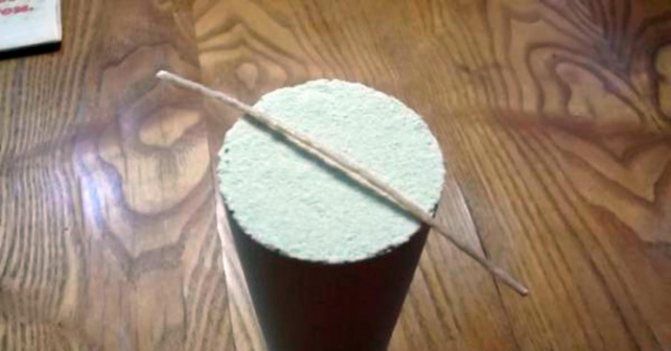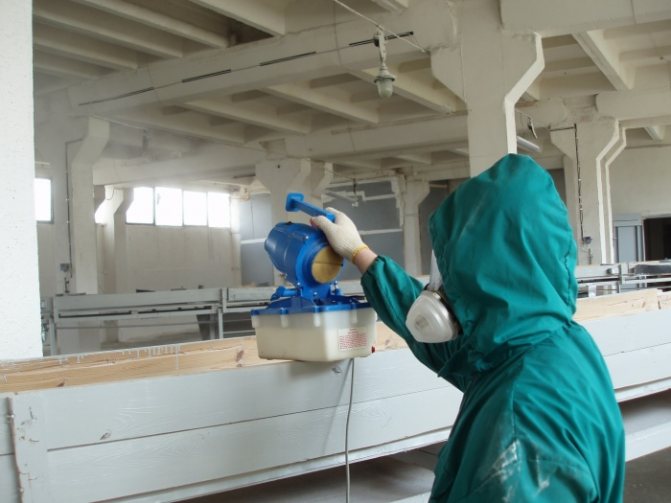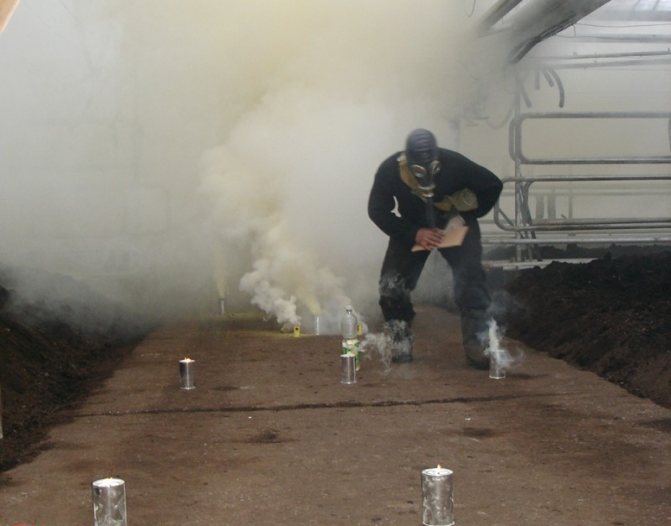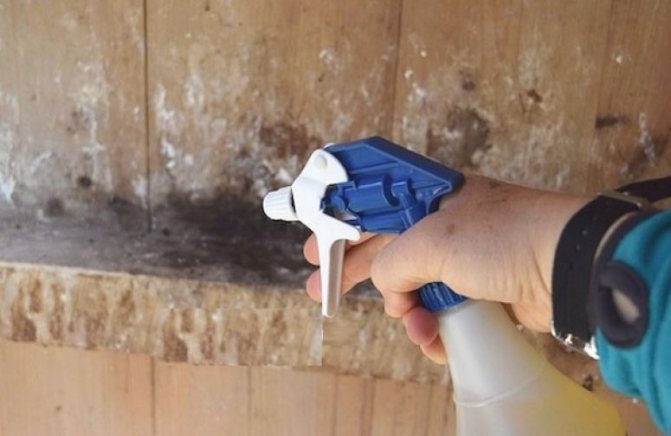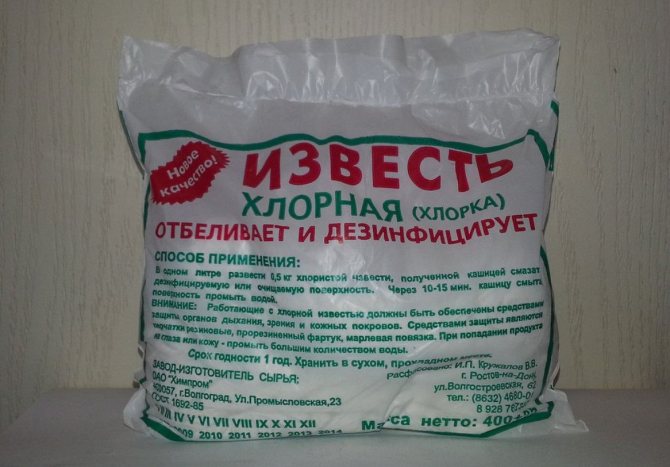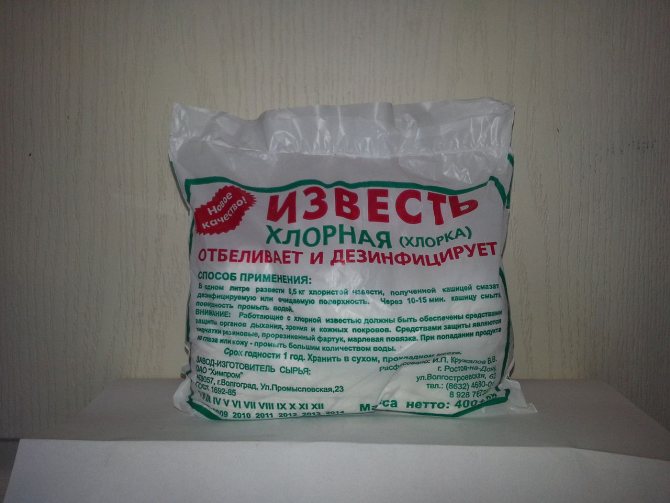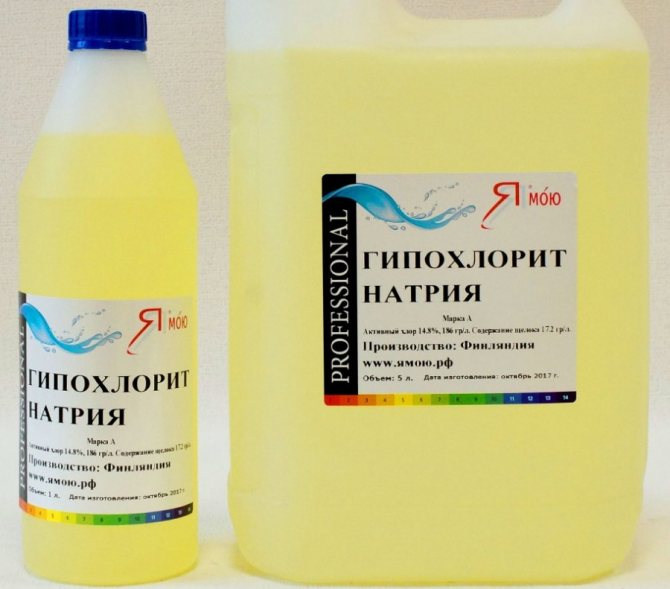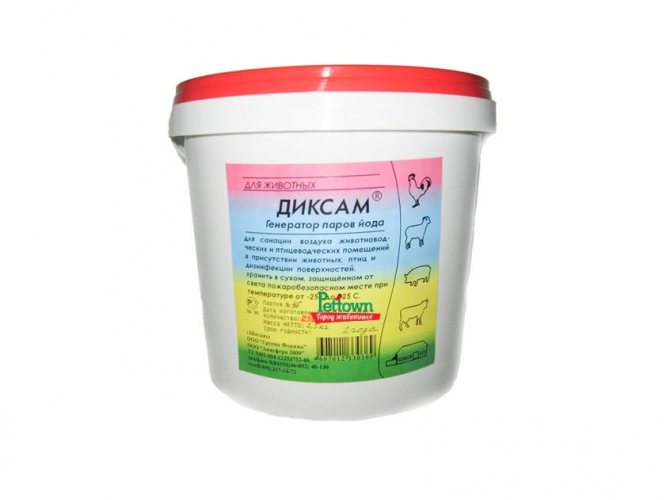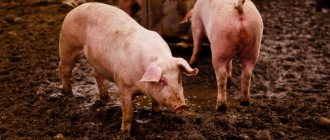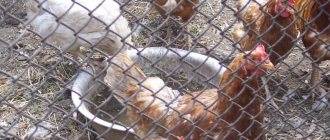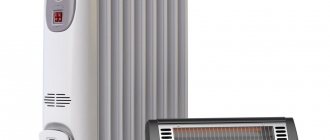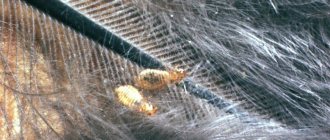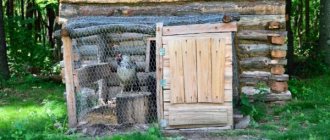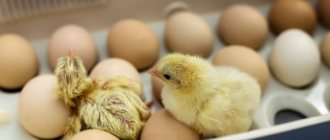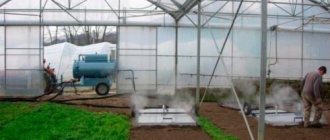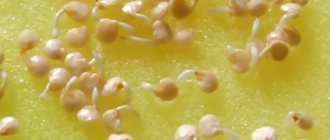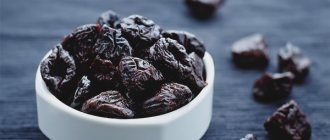Chickens - for the cleanest birds, in their home it is always dusty, dirty, there accumulates a large amount of droppings, feathers and down. In addition, chicken coops rarely boast good ventilation. All this together is an excellent environment for the appearance and reproduction of pathogens, viruses, bacteria, fungi, mold and insects dangerous for chickens (fleas, ticks). In order not to lose all the livestock of domestic chickens, it is necessary to regularly process the chicken coop - disinfection.
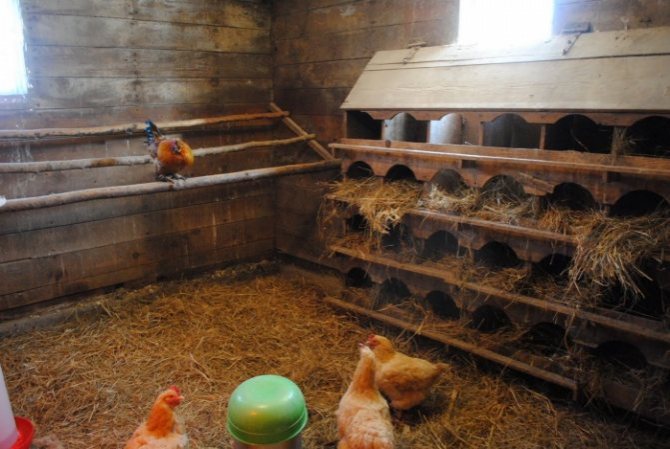
How to disinfect a chicken coop correctly, about the types of treatment, as well as how to choose drugs with a disinfecting effect, will be discussed in the article.
Signs of a chicken coop infection
You can understand that chickens suffer from chicken ticks by a number of characteristic signs:
- weight loss;
- weakness;
- apathy;
- body scratching;
- decrease in egg production;
- gray scallops and earrings;
- poor appetite;
- increased feed intake.
Another characteristic symptom of a red tick infection in chickens is the presence of small blood spots on the eggs. Insects can often be found in perches and crevices, under bedding and under breeding bars. Gathering in piles, chicken mites form small specks colored red or blackish.
Smoke bombs
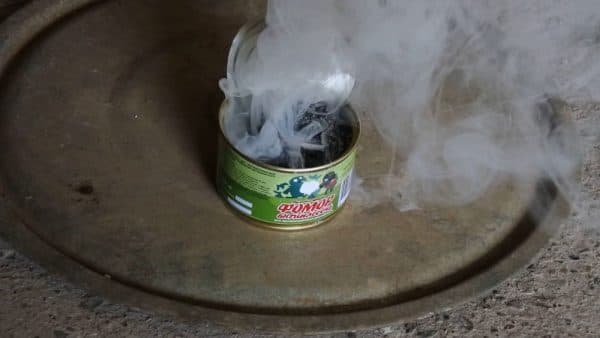

Processing a chicken coop with a sulfur checker
Smoke bombs are available for sale both in livestock stores and in construction and household departments. They are inexpensive and come in packs of 8. They are based on sulfur, which is also a disinfectant for chicken coops.
Initially, sulfur checkers were developed to combat mold, yeast and pathogenic flora in basements and cellars.
At the same time, they fight well against rodents, have an excellent insecticidal effect, but have significant disadvantages:
- The tool cannot cope with viruses of an epidemiological nature.
- For the concentration of sulfuric gas, all corners of the space are cleaned, reaching the ideal correct geometry. Only in this way does the substance work most effectively.
- The vapors are poisonous and can harm even animals that are far from the epicenter.
- Airing after treatment takes 7 to 11 days. For this period, the chickens cannot be launched back.
Salt solutions
For disinfection of the poultry house, you can prepare sodium hypochlorite yourself. It is necessary to dissolve lime with active chlorine and soda ash in water with the calculation of 200 g of two components per 1 liter. It takes about 24 hours for the solution to acquire optimal qualities, and during the first 5 hours, it is necessary to mix it several times at regular intervals. This is a relatively gentle disinfection of the chicken coop, but with long and regular use, it gives a good result.
Gives a good effect and monosodium salt, which is prepared on the basis of white powder with dichloroisocyanuric acid. In essence, this is the same active chlorine.The drug is soluble in water and can be used in any form: both with the help of nebulizers, and as a passive means of exposure in an open form.
Why is chicken mite dangerous?
Chicken mite is a blood-sucking gamasid mite, which is the most common skin parasite in chickens, but is capable of attacking other poultry (ducks, turkeys, canaries) and wild birds. Feeding on blood, it reduces the natural immunity of animals, causes them anemia and exhaustion.
The tick carries various pathogens of infectious and viral diseases, including:
- tick-borne encephalitis;
- smallpox rickettsiosis;
- rat typhus;
- tularemia;
- hemorrhagic fever, etc.
The red tick often invades the premises of a person, and its bites are dangerous to people. The enzymes contained in his saliva cause itching, allergic rashes, dermatoses and other skin diseases.
! If ticks are not removed from the hen house in time, the egg production of adult chickens decreases by 20-40%, and when burdened with head lice caused by chewing lice (lice), they almost stop rushing. Day-old chicks almost all die due to exhaustion within a week.
Delegol
Another great tool, which is not inferior in efficiency to the previous two, is Delegol. The ability to clean and disinfect is added to the main qualities of the product. This became possible due to the use in the composition of a number of active substances - parachlorometacresol, lactic acid, isopropanol, orthophenylphenol.
Standard packaging of the drug Delegol is 1 liter. The transparent liquid has a pleasant bluish tint and easily dissolves in water of any temperature and hardness. Each package has established labeling and is supplied with regulatory documentation containing recommendations for use. It is possible to agree on the volume of containers directly with the manufacturer. This is very convenient for owners of large farms.
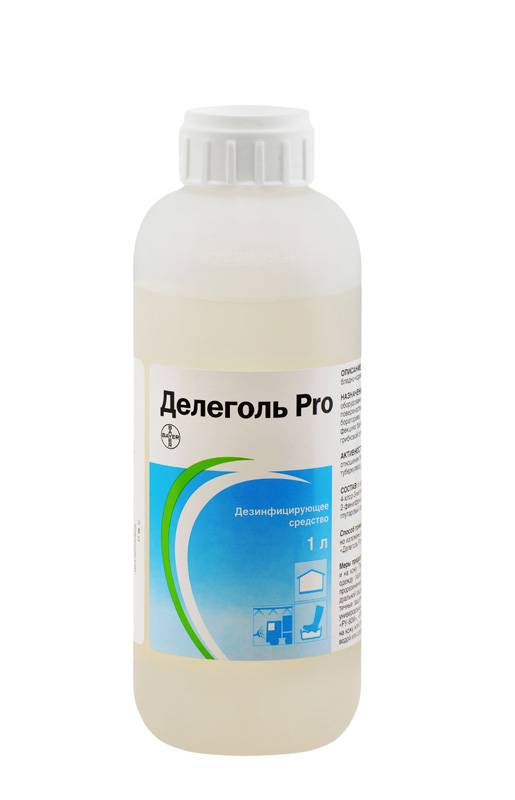

The shelf life of the product is three years. The vials with the drug are stored in a dark, dry place, avoiding exposure to heating devices. At the same time, the ambient temperature must not fall below +6 ° C. Transportation is carried out only in the original container in compliance with elementary safety standards.
This drug has many positive reviews. Its active components have a detrimental effect on all kinds of infections, bacteria, fungi and viruses. The working solution, when it comes into contact with mucous membranes and skin, causes severe irritation, therefore, the treatment of the room is carried out in a protective suit, gloves and a respirator. An important criterion affecting the quality and result of treatment with the drug is the cleanliness of the room. Organic residues reduce the disinfecting properties of the solution, therefore, before starting work, it is necessary to thoroughly clean and wash the chicken coop.
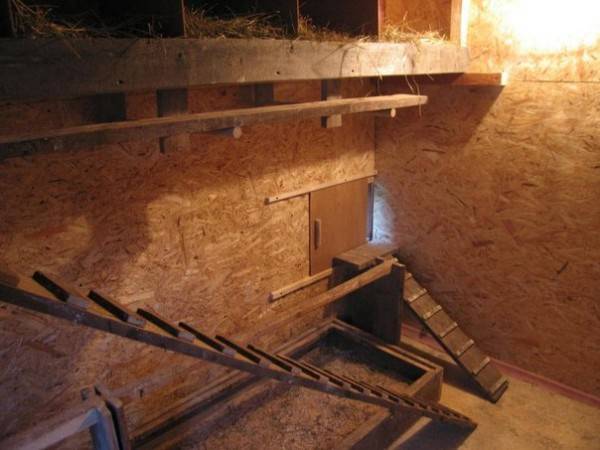

The disinfection process is carried out by the method of fine-drop irrigation of all surfaces and devices (nests, perches, other equipment). There should be no animals in the room, since the drug is quite aggressive. It is very concentrated, therefore, when calculating the proportion, it is considered 100%. The prepared solution can be stored for up to a week in a cool dark place in a tightly closed jar.
Delegol can be used not only in case of an illness, but also for the purpose of preventive treatment for disinfection. A working solution with an active substance concentration of 1% is consumed up to 0.5 l per 1 sq. m. In this case, the exposure is six hours. At a concentration of 0.75%, it doubles. This is quite enough to overcome even a strong pathogen of the disease, not to mention bugs and fleas.
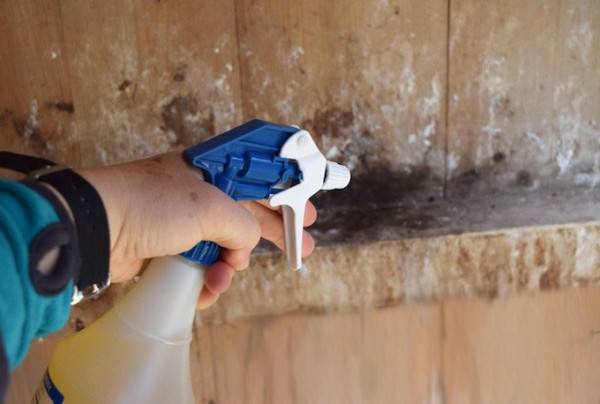

In personal subsidiary plots, you can often find surfaces that are quite difficult to disinfect.As a rule, these are painted with oil paint, covered with tiles or pieces of rubber, or have excessive roughness. Despite this, it is strictly not recommended to exceed the concentration of the substance in 1%. The consumption rate also remains at the same level. It is easy to calculate that even with regular treatments, the consumption of the drug is minimal.
You can find many more tools that promise to show good results, but the most reliable and popular ones are already on our list. Do not forget about the need to regularly disinfect the chicken coop, and your livestock will always be healthy. Not only the appearance, but also the productivity of chickens depends on this. It is especially important to do the treatment in the fall, because in winter such an opportunity is unlikely to appear.
New generation tools
Every year the chemicals market releases more and more new drugs. Their formulas are being improved and become more effective and less traumatic in relation to the health of birds and people. From the funds of the new generation, Glutex, of domestic production, is allocated. It is produced in the form of an emerald-herbal concentrate. It is neutral to metals and non-corrosive. In addition to the bactericidal effect, Glutex has a virucidal and fungicidal effect.


The climate is marked by high efficiency not only in poultry farming, animal husbandry, but even in medicine. It acts on viruses, yeasts, including tuberculosis bacteria.
Also, ammonium nitrate checkers, Tambey, have become widely used. With their help, poultry farmers fight against respiratory diseases of chickens.
How to use
In order for the sulfur checker to fulfill its task as much as possible, it is necessary to tightly plug all the cracks of the treatment object through which smoke can seep. Poultry and animals should not be allowed to the treated room - the influence of sulfur smoke has a detrimental effect on mucous membranes.
After removal of animals and birds, you can process:
- remove the checker and wick from the packaging;
- place the checker or checkers on the floor at an equal distance from each other on non-combustible stands. Checkers must be at least 0.5 m away from objects that can catch fire;
- put the wick on the saber and set it on fire. If there are more than two checkers, two people are set on fire at the same time;
- make sure that the checker is smoldering - a dark spot has appeared on it and smoke has gone;
- leave the room;
- after 24-36 hours open the room for ventilation.
Sulfur bath
After processing the chicken coop, it is important to process its inhabitants. To get rid of chickens from ectoparasites, prepare a bath of ash and sand with the addition of sulfur: 100 g of sulfur per base bucket with a volume of 12-15 liters... Rules for sand and ash baths with added sulfur:
- the mixture must be dry (under a canopy so that no precipitation falls);
- the depth of the container should not exceed 25 cm, fill with the mixture by two-thirds;
- monitor the level of the mixture in the container, add as it decreases;
- regularly clean the bath from droppings and debris.
Diagnosis of infection
An adult tick is not easy to find on a bird, since it is not constantly on chickens, but only attacks them at night. The parasite has microscopic dimensions (female body length - 0.7-0.8 mm, male - 0.5 mm), almost invisible during visual inspection of the plumage. In the daytime, he hides in cracks in the floor, debris. Live individuals, like their eggs, are often found in clusters of dead insects, mixed with soil and food. Red mites reproduce most intensively in the warm season, dying only at temperatures below -5 ° C.
“Practical advice. Chicken mites are easy to spot by placing some litter from the bottom of the nest or from the floor of the cage on a sheet of white paper. It is better to inspect the house at night in bright light, since it is at this time that the pest activates and attacks the birds. With a high degree of infection of the livestock, it can be noticed even during the day. "
Methods for disinfecting a chicken coop at home
If ticks are found in the hen house, it is urgent to treat the room with biological or chemical acaricides, using the most convenient method of disinfection:
- Wet processing.
The poultry house is sprayed with a liquid preparation that is diluted with water in a certain proportion. Such disinfection of the chicken coop at home is considered more time-consuming, since it requires the preparation of a solution, work clothes and sanitizing agents. At the same time, it is important to carefully process the surfaces of the poultry house, otherwise live individuals may remain, due to which the parasites will quickly restore their numbers. - Quartzization.
Sanitation of the premises is carried out using germicidal UV lamps. If the bird is kept in cages, ultraviolet irradiation is carried out around the clock at a dose of 20-25 w / may × h / m2. Quartzing is used not only to kill ticks, but also to prevent rickets, heal wounds and increase the immunity of laying hens. - Aeration.
The chicken coop is treated with sprays, smoke bombs and other aerosol products. Aeration is the most convenient and effective way to combat blood-sucking insects, but it has one drawback - due to the use of poisonous drugs that can harm the health of the bird, an empty room is treated.
Disinfection of a chicken coop in the presence of a bird is rarely carried out, usually in winter and in those cases when there is no place for laying hens during the treatment period. There are not many safe acaricidal drugs that can effectively protect birds from red ticks. But one of them, "Virocid", received good recommendations from specialists for its non-toxicity and the possibility of using it in the presence of chickens. An important condition is that it is necessary to correctly calculate its dosage, otherwise the acaricide will not have the desired effect on parasites or cause poisoning of the entire poultry population.
! The concentration of the Virocid working solution for disinfection treatment in the presence of layers should be 0.5% at a dose of 5 ml per 1 m3, and the exposure time should not exceed 30 minutes.
At the end of the sanitation, it is not necessary to remove the remnants of the product from the surfaces of the room, to clean the inventory and dishes. "Virocid" is a biodegradable drug, at least 95% of which decomposes into non-toxic substances a few hours after treatment.


Folk remedies
How to get rid of chicken mites in your chicken coop without using chemicals? This question worries almost all owners of subsidiary farms in Moscow and the Moscow region. Many of them use folk remedies because they are safe for hens and chickens and are easy to buy at your local store. The most popular ones are:
- lime;
- chlorine;
- soda ash;
- vinegar.
Usually, the walls of the poultry house are whitened with slaked lime, and the cages, inventory, and dishes are treated with solutions of acetic or perchloric acid in a ratio of 3: 2. Substances destroy the chitinous cover of parasites, causing the death of both adults and larvae and eggs. However, removing ticks by such means is a big risk. They have a weak effect on insects, so they are recommended to be used if the blood-sucking ectoparasites did not have time to multiply in large quantities.
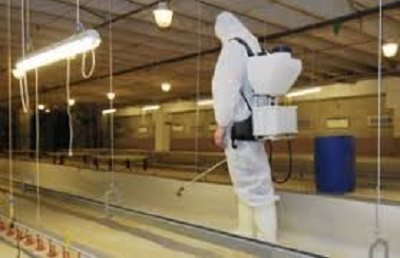

Chemicals
If the folk methods of dealing with the tick did not meet expectations, it is better to purchase more reliable means for disinfecting the chicken coop - acaricidal preparations containing pyromethrin, chlorine and organophosphorus substances. Their range is wide enough:
- "Tsifox";
- "Dix";
- "Ivermek"
- "Deltsid";
- Iretrium
- "Karbofos";
- "Chlorine-turpentine";
- "Creolin";
- "Formaldehyde";
- “Iodine monochloride, etc.
Chemicals for disinfecting the chicken coop allow you to completely get rid of parasites in 2-3 treatments.Among them I would like to mention the antiparasitic agent "Ivermek-ON", the effectiveness of which is confirmed by the research of the State Scientific Institution VIGIS of the Russian Academy of Agricultural Sciences. The insecticide contains 1% ivermectin, has a wide range of effects and causes the death of both ticks, flies, lice, fleas. In the doses recommended by the instructions, it does not have a toxic effect on animals (with the exception of fish and bees), it can be used in the presence of a bird.
Pros and cons of acaricides
The use of chemicals for disinfecting a chicken coop against ticks has both positive and negative sides: Pros:
- high efficiency;
- ease of processing;
- fast action.
Minuses:
- toxicity to humans and animals;
- require strict adherence to protective measures during use;
- stability in the external environment.
Many synthetic drugs can accumulate in the tissues of the body, having a toxic effect on the development of embryos and reducing the reproductive function of birds.
Preparation for disinfection


Preparation for disinfection
The chicken coop is processed most often in the absence of birds, if such a possibility exists. The preparations used for disinfection are safe for birds, but in order to avoid an allergic reaction to the components in any individual (it is rare), it is better to drive the chickens out into the street.
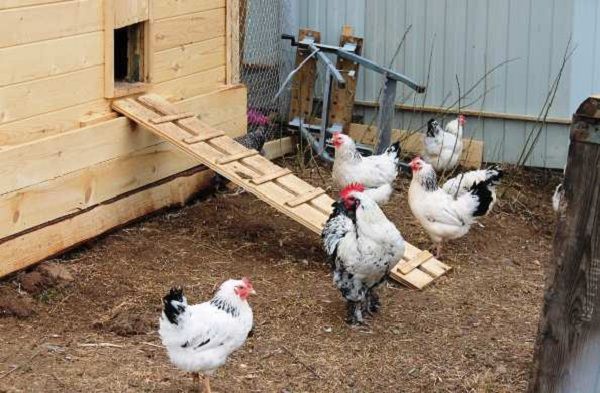

It is better to drive the chickens out during disinfection.
Depending on the condition of the litter in the coop, it can also be removed and then covered with a new one. This procedure is highly recommended, but disinfection every 2 months can be done without it. In general, clean the house of minor elements as much as possible, especially those containing the waste products of birds.
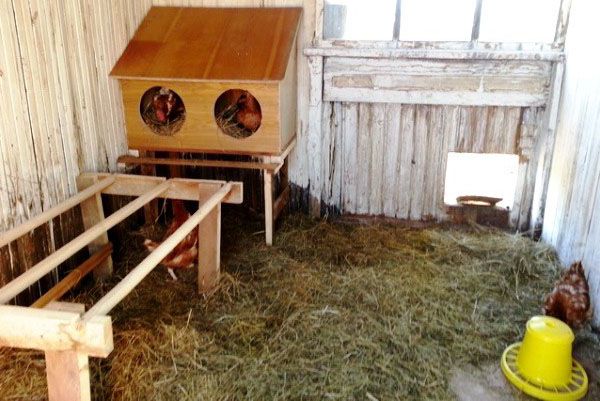

Old bedding can also be removed
Also, as a preparatory measure, you need to attend to the presence of special clothing and respiratory protection. Ideally, a special jumpsuit is used, it is quite practical and prevents the drug from entering the body and respiratory tract. Even taking into account the safety of the drugs, according to the assurances of the manufacturers, it is better to avoid unnecessary contact with chemical compounds.


Special protective clothing is essential for your safety
Gloves are put on hands, mainly made of rubber. A respirator is put on the respiratory system. Sanitary cleaning of the chicken coop is associated with regular cleaning, so you should take a broom, scoop and brush with you.
Next, clean the walls, floor, all internal elements from foreign substances, then wash them. It is better to use natural, safe preparations as a detergent, otherwise poisonous fumes can harm the microflora of the chicken coop, and, accordingly, the health of chickens. People often use simple, heated water with a small amount of apple cider vinegar.


The chicken coop must be cleaned of foreign matter.
Some farmers finish the processing process at this point, they do not reach disinfection. In this case, it is not possible to get rid of the bacteria. You can use the method between disinfection procedures if they are rarely carried out, but it is better to finish the procedure anyway.
After processing, you need to cover the walls with lime, a fresh layer. Then cover with new bedding. After completing the preparatory stage, you can proceed to disinfection.
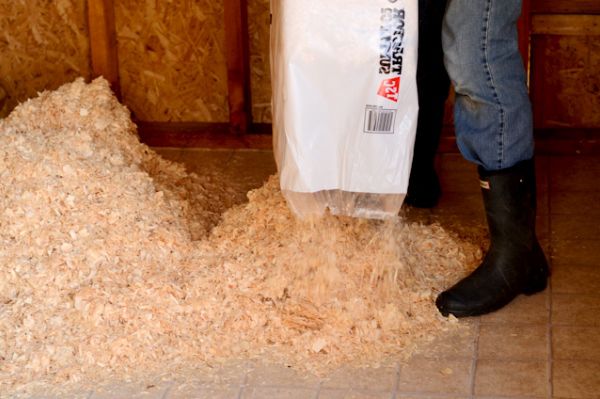

We lay a new bedding
Some of the best drugs
The opinions of experts differ greatly regarding the efficacy and effectiveness of the use of drugs. Most consider the best substances "Virocid", "Glutex", "Ecocid S" and "Delegol". The first two representatives have been considered, let's move on to the rest.
"Ecocide C" - this product is presented in the form of a powder concentrate. It has a complex effect, the preparation is based on a triple salt.Additionally, organic acids, inorganic salt additives, surfactants are used. These components have an unpleasant odor, therefore, a citrus flavor is present.
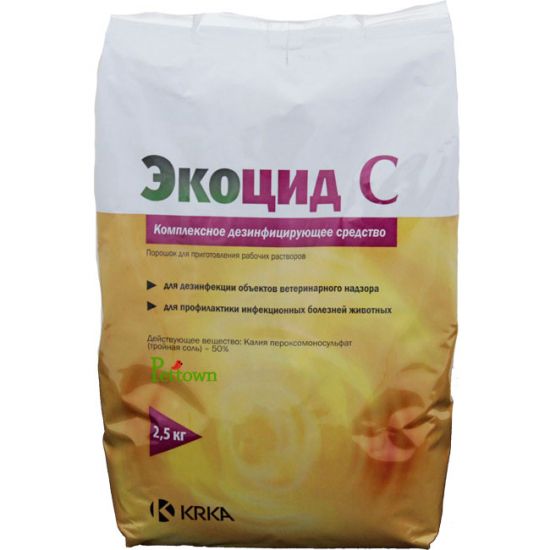

"Ecocide C"
Ecocide C prices
Ecocide C
The drug is distributed in a variety of containers from 50 g to 2.5 kg. The shelf life of the substance is 5 years, provided that it is kept in a dry place, protected from the rays of the sun. The unsealed preparation retains its properties for 1 month. The diluted solution should be applied within one week. "Ecocide C" is considered an oxidizing agent, which enhances its properties several times, but it does not cause corrosion of the metal.
Birds should be taken out before treatment, the duration of the procedure is 2 hours. After the end of another 5-6 hours, the chicken coop should be left empty.


It's better to take chickens out into the street
A 1% solution is used for disinfection; all surfaces are treated with it. A preventive sanitary procedure for water is also possible with the help of Ecocid C, then the dosage is 0.5%. The drug has a 3rd hazard class, you will have to follow basic precautions.
Delegol Is a preparation with a rich complex of active substances. Eliminates bacteria of various origins. It is produced in the form of a bluish liquid that mixes easily with water. Shelf life 3 years at temperatures above + 6 ° C.
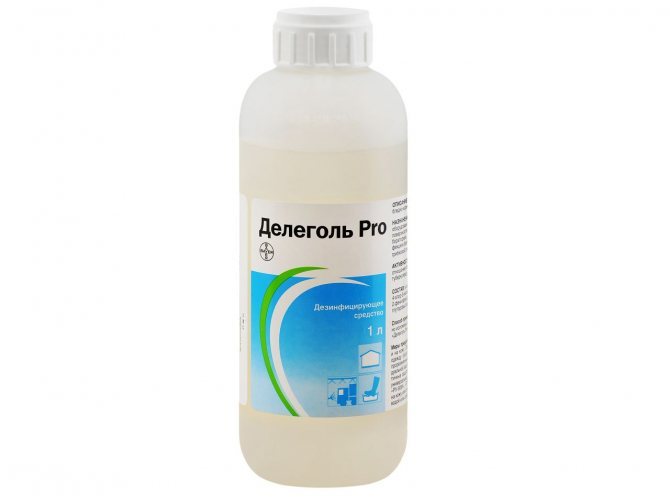

Delegol
The sanitary procedure is carried out by means of small-drop irrigation. It is necessary to cover all surfaces with a substance, while all living creatures will have to be expelled, since the drug is quite toxic. Do not allow contact with mucous membranes.
To perform the procedure, a 1% solution should be prepared, where the consumption is 0.5 liters per 1 m2. The exposure when using Delegol is 6 hours. When the concentration is reduced to 0.75%, the exposure should be increased to 12 hours. It is strictly forbidden to exceed the concentration of the substance, otherwise harm to chickens is possible.
What drugs are used to treat infections
Before buying drugs, farmers ask themselves the question not only about which substance is most effective, but also how economical it is. For example, the cheapest option is to buy disinfecting solutions that are applicable to large areas of poultry farms. So you will definitely be sure of the benefits of your purchase. They can be easily identified by their large containers as well as by the place of purchase. They are not sold in an ordinary hypermarket, only in specialized stores.
Cons: a high proportion of toxicity to the pulmonary system.
The more modern and least secure new generation products are more expensive, but applicable in any environment.
Ecocide C
Ecocid C is a concentrated powder with triple salt as the main active ingredient. In addition to it, the formula contains organic acids, inorganic impurities and surfactants. The unpleasant aroma is smoothed out by the orange flavor. It is sold in various packages from 50 g to 2.5 kg with a shelf life of up to 5 years.
When the powder is depressurized, the activity of the components lasts only 1 month.
For complete disinfection, a 1% aqueous solution is made, for preventive purposes - 0.5%. The ready-made substance should be used within 7 days. The manufacturer warns that before processing, all birds are taken out of the chicken coop and then ventilated for about 6 hours.
Despite the fact that Ecocide C is an oxidizing agent with a 3rd hazard class, it does not affect the corrosion of metal surfaces.
Delegol
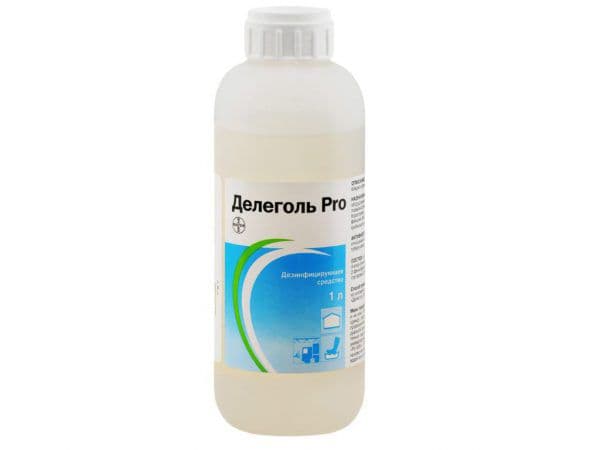

After processing the premises with Delegol, chickens can be introduced after 12 hours. Price from 755 RUR
Delegol is the richest drug in active substances. It is a blue liquid that easily comes into contact with water. Shelf life, subject to storage conditions and temperatures no higher than + 6˚С - 3 years. Sprinkle with a product using aerosol installations or wet. At the same time, the birds are taken out, and the objects are covered with a thick cloth. To avoid burns to the mucous membrane, wear a gas mask or goggles and a mask. Dilute Delegol, as well as Ecocid C, - 1% - disinfection; 0.5% - prevention. The average consumption of the finished solution is 0.5 liters per 1 sq. m. The standard action time is 6 hours, but chickens can be introduced into the barn only after 12 hours.
Monclavite
Monclavit is an antiseptic, which is an aqueous emulsion with the main active ingredient - iodine. It is very popular among farmers, as it has a wide spectrum of action against all fungal infections, yeasts and other infectious microorganisms. The drug "Monclavit-1" has bactericidal and antiviral properties. But it works in conjunction with a cold air generator, so it is suitable for large poultry houses.
Monclavite enhances its effect when heated in a water bath above 40 ° C.
In addition to antibacterial properties, the contained components affect the hormonal system of chickens, thereby increasing egg production. It has no contraindications and can be used in any chicken coop, therefore, the agent is used for cleaning and containers intended for food and drink.
The breeds of laying hens can be found in this article.
Spray it by means of aerosol irrigation or with a spray bottle. Rinse off the product is not required. Disinfection is carried out once every 5-7 days, within 45 minutes.
Tick treatment for chickens
Getting rid of the red tick is difficult, given its high fertility and resistance to many insecticides. Poultry treatment requires an integrated approach, following a number of stages:
1. Disinfection of the premises.
Treatment of a chicken coop from ticks is performed at the first signs of infection of chickens, until the population of parasites has reached a maximum. Feather mites are sensitive to high temperatures, therefore, with small quantities of them, it is enough to heat the room:
- metal objects are burned with a gas burner;
- the surfaces of the walls, the floor of the barn are sprayed with a solution of lime or copper sulfate;
- wooden drinkers, perches, feeders are scalded with boiling water.
If chicken parasites have managed to multiply in large numbers, they disinfect the poultry house and equipment with chemicals. Before treating the chicken coop from ticks, first of all, the bulk of the insects are destroyed in order to prevent them from spreading or transferring to other rooms. To do this, before the first sanitation, chickens are removed, the room is mechanically cleaned: droppings, bedding, garbage are removed.
The second time the poultry house is disinfected after washing and whitewashing the walls with a lime solution, then ventilated for 2-3 hours. Dead ticks are collected and burned. The disinfected surfaces are washed with clean water, drinkers and feeders are treated with a 3% solution of soda ash, after which they are rinsed. At the end of deacarization, the breeding stock with young animals is again placed in the poultry house.
2. Treatment with medicinal compositions of the livestock.
Each chicken is thoroughly sprayed or dusted using the appropriate deacarification formulations:
Video "Professional disinfection of the poultry house"
The video shows the process of disinfecting a chicken coop.
Chickens - for the cleanest birds, in their home it is always dusty, dirty, there accumulates a large amount of droppings, feathers and down. In addition, chicken coops rarely boast good ventilation. All this together is an excellent environment for the appearance and reproduction of pathogens, viruses, bacteria, fungi, mold and insects dangerous for chickens (fleas, ticks). In order not to lose all the livestock of domestic chickens, it is necessary to regularly process the chicken coop - disinfection.
How to disinfect a chicken coop correctly, about the types of treatment, as well as how to choose drugs with a disinfecting effect, will be discussed in the article.
conclusions
- Disinfection of a chicken coop (disinfect / disinfect) is a matter that requires regularity and careful preparation of the keeping of chickens, otherwise its absence can lead to illness.
- Before you start irrigating the barn with bactericidal substances, the room is thoroughly mechanically cleaned.
- The method, in which the chickens remain, is not very effective and can serve as an intermediate, supporting stage, rather than as the main method of disinfection.
- The most demanded industrial preparations are: Glutex, Monklavit, Delegol, Ecocid C, manganese.
- Also, sulfur bombs, slaked lime and purification by fire are used as an auxiliary aid.
- Farmers use 2 main options: wet cleaning and aerosol. The latter, creating a veil of cold fog, settles more slowly, disinfecting the air, and is considered the most effective.
You can read about the correct keeping of chickens at the link.
Modern disinfectants for the chicken coop
Videos of the latest and safest remedies can convince shoppers to try modern sanitation solutions. Choosing the right products for price and functionality is not easy. Leaders of the new generation:
- "Virocid";
- Glutex;
- Bromosept;
- Delegol;
- Ecocide S.
New drugs instantly affect fungi, viruses, the source of infection and bacteria. Protective suit, respirator and sealed gloves are clothing, without which it is impossible to sanitize even with the most effective means. The result of spraying will satisfy the farmer if you use a complex treatment of the chicken coop.
If many young animals live in the courtyard and hen house, then the surfaces should be disinfected in several stages. Highly concentrated products are applied in 2-3 layers alternately on each wall. Only in this way will the drugs destroy the source of infection, mold and mildew.
It is not difficult to find good substances, but it will not be possible to process a chicken coop without the help of an experienced farmer. Regular disinfection is the key to the health of domestic birds. Prevention will take less time and effort for a person than treating a sick bird.
Prevention measures
It is easier to prevent the appearance of a red tick than to treat an infected bird and engage in laborious decontamination of a chicken coop. Prevention should include a set of sanitary measures:
- Scheduled inspection of the livestock. The feather cover of hens is examined for the presence of scratches, wounds, and parasites. The procedure is carried out in early spring, when the tick activates and starts looking for food.
- Overexposure of a new bird. Upon admission, the chickens are examined and treated with acaricidal preparations for prophylactic purposes.
- Regular cleaning of the poultry house: cleaning of droppings, replacement of bedding, flushing of feeders, drinkers at least 1 time per week.
- Keeping the walking area clean: the yard is protected from precipitation by a canopy, and the soil is regularly sprinkled with sand. Some poultry breeders spread wormwood, tansy, chamomile and other odorous herbs that repel the red tick in the chicken coop.
- Disinfection of the poultry house. Processing is carried out at least twice a year - in the spring before the activation of the parasite and in late autumn, when the bird is prepared for transfer to closed rooms.
The main goal of preventive maintenance is to prevent ticks from entering the house and to detect infestation of layers in the early stages. If the recommendations are fully implemented, it is always possible to avoid an outbreak of the disease and maintain the entire population.
Choosing between self-disinfection and specialized companies
Of course, each breeder chooses for himself independently, based on his financial condition. Calling specialists costs a certain amount of money.But the best preparations for cleaning the premises will be selected and you can count on high-quality work. After disinfection with the help of specialists, the chicken coop will meet sanitary and epidemiological standards.
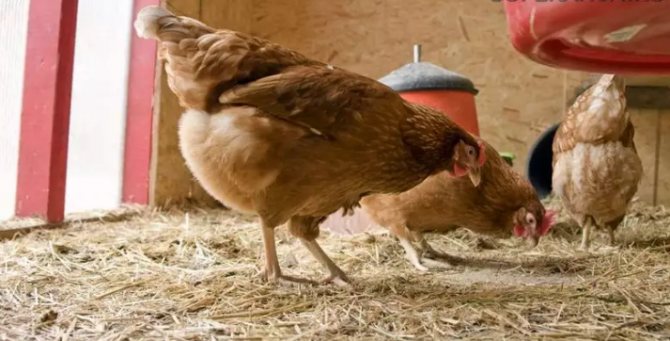

After disinfection, the chicken coop meets sanitary and epidemiological standards
The drugs that are used do not harm people, animals or birds at all (not always). Layers do not experience discomfort, but parasites and various infections die. Calling a team to disinfect the chicken coop means parting with at least 2,000 rubles. The amount depends on the company, the quality of the materials used and the size of the room.
It is definitely easier to carry out disinfection with the help of specialists, but calling them every 2 months is a costly procedure. Therefore, most use the services once a year or do it on their own. It is worth noting that you will still have to buy disinfectants, even performing the procedure yourself, but it will cost several times cheaper. The consumption of drugs is low, since they are sold in the form of concentrates that are diluted in water.
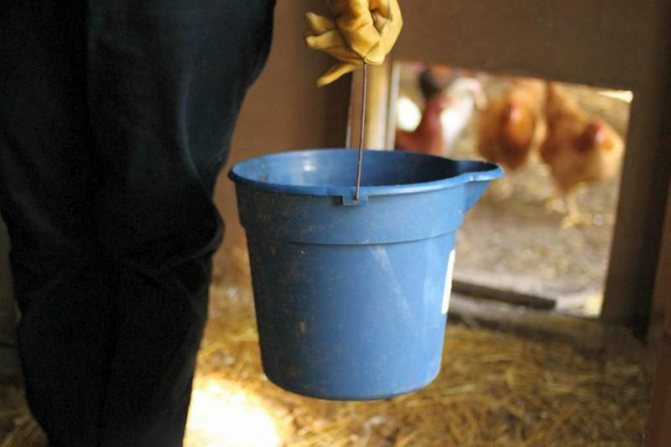

You can disinfect the chicken coop yourself
It is most convenient to carry out sanitary procedures in a warm season, when you can simply release the birds into the yard. The most favorable periods for the development of ticks and bacteria are late spring - early summer, during this period active reproduction begins. Also, the winter period is dangerous, since artificial heating is used in the room. If it is designed incorrectly or there is no good extraction, then the level of moisture increases, and, accordingly, conditions are created for the spread of viruses. Therefore, it is best to sanitize twice a year.
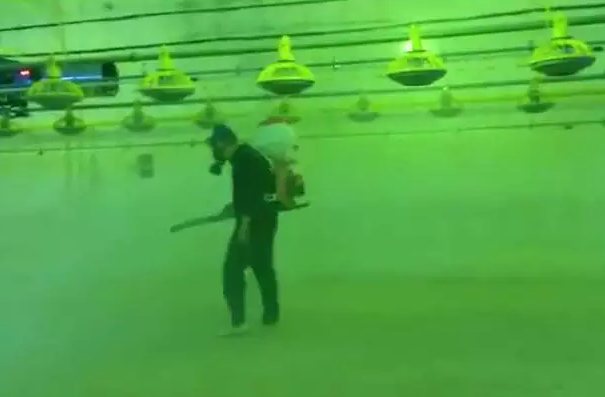

Sanitization
Regardless of your choice, you should ensure that the chicken coop is properly maintained between sanitary procedures. So by adhering to simple rules, it is possible to save birds from diseases, maintain cleanliness, this will help minimize the number of procedures for processing the poultry house.
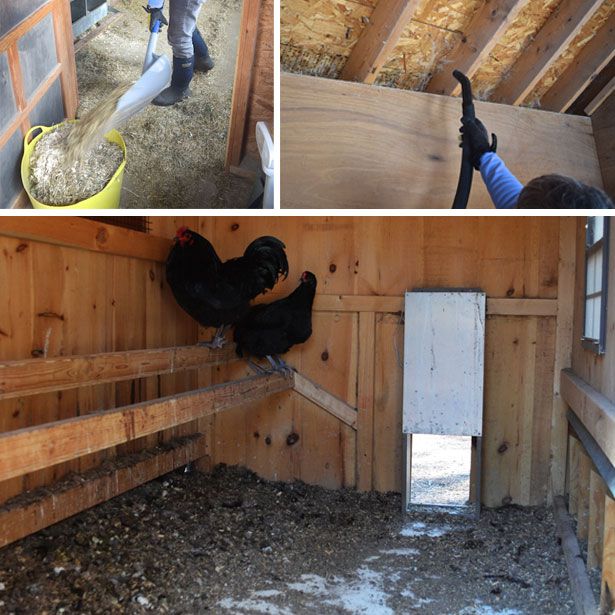

It is important to keep the coop clean between sanitizations.
- Equip the chicken coop with perches, preferably removable, to facilitate the cleaning process.
- It is necessary to install pallets made of plastic or other material under the perches. This will help you remove the droppings easily.
- If chickens were bought, then they must first be processed, otherwise they can introduce bacteria or parasites.
- To improve the quality of the litter, a small layer of sand should be poured over it.
Prices for a nest for laying hens
Laying hen nest
Air purification with iodine, chlorine-turpentine
Air purification is carried out in the absence and presence of chickens. The course lasts about 3 days, once a month. In this case, the concentration of the active element is reduced so as not to harm the health of the pets. For this purpose, the following drugs are used:
- Iodine monochloride is diluted in an amount of 10-15 ml with an aluminum wire in a ratio of 1 to 20. Iodine enters into a chemical reaction and smoke appears, which quickly spreads throughout the room.
- Similarly to the first option, chlorine-turpentine is also diluted. In this case, 20 g of chloride lime is mixed with 0.2 ml of turpentine.
- Monclavite or Ecocide. These are modern iodine-based preparations. They are recommended for air treatment for birds with respiratory diseases. Dixam, in the form of tablets, is also suitable for these purposes.
- There are options for disinfection and iodine checkers.
Views
There are not so many types of disinfection in modern poultry farming. There are several classic techniques: wet, aerosol and in the presence of birds. It is worth dwelling on each in more detail and considering their significant differences.
Wet
Wet antibacterial cleaning is reduced to spraying the previously cleaned surfaces of the chicken coop with special solutions of agents.The latter are loaded into spraying units, spray guns and distributed throughout the entire volume of the barn.
You can read about how to build a chicken coop with your own hands here.
The poultry farmers then wait for the surfaces to dry completely and the birds can be started. If disinfection takes place in the summer, then they additionally cut the grass in the walking area, remove garbage and clean up the droppings outside the premises.
Aerosol


The joints of the internal visit should be especially carefully processed.
Aerosol disinfection is similar in principle to wet disinfection, but has a different spray system. The disinfecting substance is transformed into tiny droplets of fog by means of generating machines. The resulting suspension slowly settles on the surface and hangs in the air for some time.
This ensures maximum contact with all objects, walls, floor and ceiling. Some substances, for example, iodine monochloride, are brought into the fine fraction by distillation, using chemical methods of action. Learn about the drug Iodinol for laying hens in this material.
Poultry farmers consider the 2 above methods to be the most effective, with them all the details, things of the chicken coop are most carefully processed.
In the presence of a bird
When chickens are in the hen house, disinfection can be carried out, but it is quite difficult. This is due to the fact that you cannot use potent drugs that will enter the lungs of pets, as well as the impossibility of completely cleaning the far corners of the chicken coop. This method is referred to as reorganization.
The chicken coop projects can be found here.
In this case, the complete elimination of the diaphoretic flora does not occur, but only a partial decrease in its level. Sparing drugs in minimal doses are treated for three days, at least once a month.
Principle of operation
The principle of the wick product is quite simple. Intensive heating of the air occurs, during which the surrounding space is saturated with poisonous smoke. This helps to solve the current problems of the room, and also prevents the formation of mold and rot. Wood products in underground rooms are most vulnerable to such phenomena.
After using the sulfur checker, the mold becomes loose and soft, it can be easily brushed off with a stiff brush from any surface. The smoke, spreading over the entire area, drives away animals and insects. The use of such smoke bombs is especially effective against bugs, ticks and bark beetles.
Important! There are special checkers designed specifically for fighting moles or insects, and there are universal ones that can be used to prevent and solve any problems in underground storage facilities.


Advantages and disadvantages
Like any disinfectant, a sulfur cellar checker has a number of advantages over other methods, but also some disadvantages.
Advantages
- Abundant harvest in greenhouses with preliminary fumigation of the room;
- Low cost with high efficiency;
- Ease of use. Each product is accompanied by instructions that explain all the features of the installation and precautions for use, which is necessary for the safety of the owner;
- Safety of use. The presence of a filter provides for a short delay of a couple of minutes before the start of combustion and the release of smoke. This gives the person time to leave the premises;
- Indoor use before finishing is a preventive measure against mold and mildew;
- No counterfeits and high quality products from most manufacturers.
disadvantages
The owner, his family members and pets must leave the premises while the cellar is being processed. Manufacturers are advised not to just close the premises, but to leave the house.
This is due to the possibility of smoke penetration through defects in the flooring or walls of an underground cellar into residential above-ground premises.In order to poison yourself with sulfuric anhydride, a scanty amount of a substance distributed in a volatile form is enough
It is strictly forbidden to use sulfur bombs in cellars in which any materials that are characterized by rapid ignition are stored.
In multi-storey residential buildings, the use of sulfur bombs is prohibited. The smoke that is emitted is very active and too toxic for the people living in the house. It can penetrate to the very top floors and damage the health of the residents of the house. Use in an apartment may result in criminal liability.
The complex of measures for the storage of sulfur bombs is too difficult, since such substances must be stored in sealed containers that are inaccessible for children and animals. Do not store them next to fire.
Sulfur bombs are not always effective against moles. In order to eliminate them, it is necessary to place the product directly in the hole. This is not always possible due to the lack of access to the animal's narrow burrows.
Reasons for
Chickens, like other living organisms, are susceptible to many diseases. Any pathology is capable of destroying all livestock completely. But to prevent this from happening, the farmer must carry out routine disinfection of the poultry house.
The chicken coop needs urgent treatment when the standards for contamination with faeces, spoiled food, and rancid water are exceeded. Pathogenic microbes and bacteria are formed in the waste products of birds prone to decay. They also cause diseases in chickens.
A common reason for carrying out sanitary and hygienic measures is a poorly thought-out ventilation system in the room. In this case, an ideal environment for the development of infections is also created.
Why disinfect a chicken coop
Regular housekeeping and care taken fully by the owners do not guarantee perfect house cleanliness. This is due to the pathological processes that are formed when mixing dirt, feed residues and poultry waste products. Periodic cleansing does not get rid of parasites, viruses and infections. This means that the health of chickens is in danger.
The owners themselves also contribute to the development of pathogenic microflora, who unconsciously bring microorganisms into the hen house on shoes and clothes. Therefore, one of the rules for the prevention of diseases is the use of protective clothing at each visit to the premises.
Preventive measures should be taken every 2 months. Simply collecting litter is not enough, parasites and bacteria take root in perches, under bedding, in hay, in nests and even in walls (especially if they are made of clay).
Reference! If it is not possible to process the poultry house often, it should be done at least once every six months during the off-season (spring, autumn).
Disinfect yourself or trust professionals?
It is decided individually to involve professionals in the work or to do the processing on their own. The cost of funds is provided in both cases; when calling a specialist, you need to plan additional costs for the service.
The following factors influence the decision on who will disinfect:
- the essence of the problem (in case of serious diseases or mass infection with parasites, it is better to seek qualified help);
- the ability to purchase high-quality drugs (in remote regional centers, it is not always available to purchase good products, it is easier to contact the sanitary service);
- self-selection of funds requires a careful study of the instructions, otherwise you can harm both people and birds;
- the ability to pay for a call to the sanitary service every 2 months (for many it is expensive, one treatment costs 1500-2000 rubles).
Having weighed all the pros and cons, the best option is selected. And it is better to combine them in order to avoid even greater losses in the fight against diseases and parasites.
Features of processing after illness of chickens
Disinfection is carried out taking into account the problem that has arisen. If the infection was caused by parasites, you need to purchase a drug of the appropriate action to disinfect the room.
Treatment and disinfection of the chicken coop is carried out in parallel. Experienced poultry farmers recommend treating the entire flock first. After that, the birds are kept in a corral on the street or in another room. In the meantime, the hen house is thoroughly cleaned. The litter is disposed of, feeders and other removable containers are washed and treated with special preparations.
In the house, the top layer should be scraped off the walls and floor. It is also better to wash off the lime so that pathogens or eggs are not left under it.
Reference! When buying a drug, you need to clarify what types of parasites it acts on, whether the effect extends to larvae and eggs, causative agents of fungal diseases.
Disinfection after a chicken disease should be carried out repeatedly. Sometimes 3-4 procedures are required. After prolonged airing, the birds are returned to their original place. But before that, they need to be examined in order to avoid re-infection.
Where to begin?
Before starting treatment with the drug, the room must be cleaned of accumulated manure, feathers, litter. Scrapers clean nests and perches. They remove cobwebs, dust and other foci where harmful insects can be. In most cases, such measures are quite enough to ensure the effective operation of the drug, but sometimes it may additionally require washing the surfaces. It is performed with a stiff brush, paying special attention to the corners and places where the walls meet the floor and ceiling.
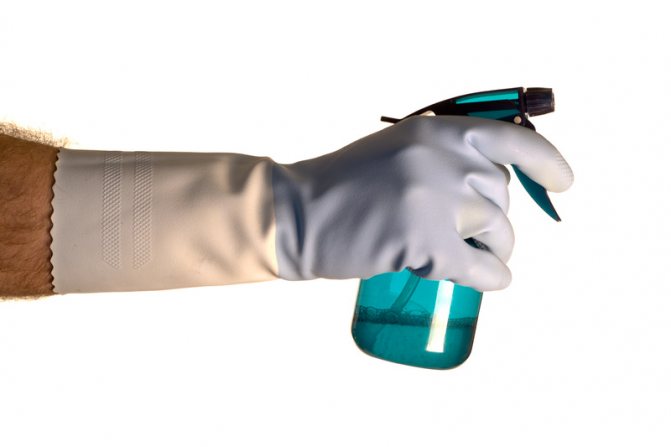

How to do it right: sequence of actions
For a stable and high-quality result, disinfection is carried out in a comprehensive manner, having carefully prepared all the necessary tools and preparations, having thought over the whole procedure.
Preparation
For preliminary manipulations, you will need tools:
- shovel or scoop;
- scrapers;
- broom;
- rags.
It is also necessary to prepare work clothes, if necessary - to protect the skin and mucous membranes from the influence of aggressive agents. The bird, if processing is carried out in its absence, must be moved to another room. Prepare inventory for the disposal of waste and accumulated garbage.
Cleaning
With the help of scrapers, you need to clean all surfaces of chicken droppings and other dirt, change the bedding layer, remove containers for food and water. If there is a need to sand moldy surfaces, replace parts of structures (perches, nests), if possible.
Washing
All available surfaces - walls, floors, ceilings, perches, etc. are washed with hot water. For greater effect and to remove an unpleasant odor, a little vinegar is added to the water. Lime-whitewashed walls and ceiling are washed from it completely, since its layer has already served. After all the procedures carried out, you can whitewash again.
Disinfection
It is advisable to decontaminate the premises in the absence of a bird, in the warm season, when it can be released outside. In this case, the processing will be of higher quality and faster.
Having previously protected yourself from the effects of drugs, start processing the room. The disinfection process begins from top to bottom: ceiling, perches, floor. It is still advisable to choose less toxic agents, since the influence of toxins can affect the productivity of the bird. The ideal disinfection option would be the use of complex measures.
Among the drugs on the market, there are several time-tested, effective remedies. Experienced farmers recommend:
- Bianol, Virocid - against viruses;
- bleach - mold, microbes, removal of excess moisture;
- Dixam - bacteria and fungal spores;
- Creolin - from ticks;
- kerosene and ammonia (applied to the bird's neck) - remedies for lice, downy eaters and other parasites.
What to do after it?
After disinfection, it is imperative to wash the feeders, drinkers and perches. This is necessary to remove the remains of the solution and / or hazardous constituents of the agent, since in contact with them, poisoning occurs in chickens. And, of course, airing. The principle applies here: the longer, the better. But for at least 1-2 hours, it should be open and you should not start the pets.
Reference! Cleaning of the surrounding area is also recommended. In addition to cleaning debris and droppings, you can sprinkle the ground with slaked lime.
Rules for the use of lime for processing
Of the household products, the most popular method of treatment with bleach. Possessing a low degree of harmfulness, it is able to save chicken coops from many problems. Like any chemically obtained substance, it has its positive and negative sides. In addition to destroying existing bacteria, it keeps the barrier against new ones for a long time. The procedure is simple and transparent. To successfully apply lime treatment, do the following:
- First, the places are cleaned of dirt and droppings.
- Slaked lime is scattered under the flooring, on the floor.
- Concrete and stone parts are painted over with this material.
- The regularity of the conduct is at least 1-2 times a month.
The agent is used as an auxiliary disinfection to the main substance, since it is not capable of fighting yeast fungi.
Bleach has a pungent, specific smell, so this method should not be used often. Some layers may show apathy, decreased appetite and egg production, and may cause allergic reactions in humans.
Down and feather fleas
Unlike a tick, fleas live on the surface of the skin and feed on dead epithelial particles, and, as the name suggests, down and feathers. Diagnostics is not difficult: insects are up to 2 mm in size and are visible to the naked eye. Chickens behave very restlessly: they pull out feathers, constantly wallow in the sand or dust. Treatment of a chicken coop from fleas using special means is the only reliable way to prevent infection.
Despite the fact that fleas live on the surface of the skin, they have a significant impact on the overall physical condition of chickens. Birds rush less, lose weight, go bald. The treatment is quite expensive and lengthy. Do you want extra costs? Do not wait until the first symptoms of infection appear: just carry out preventive treatment of puffin fleas in the chicken coop!
How to disinfect a chicken coop yourself
Following the rules for sanitizing premises, you can cope with the disinfection of the chicken coop yourself.
Preparation
First you need to prepare everything you need to do the job:
- clothing that covers most of the skin;
- personal protective equipment (rubber gloves, respirator, glasses);
- tools and materials (spray, bucket, broom, shovel, plastic bags, rags, special preparations, water).
All equipment used in sanitation should be washed with detergents after finishing work. Clothes also need to be washed and rinsed repeatedly in warm water. The respirator must be disposed of.
What it is?
The concept of "disinfection" includes the destruction of pathogens and their waste products, through complex measures.
The two main types are:
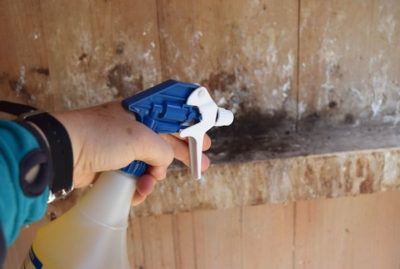

preventive, which is carried out with the aim of preventing morbidity;- focal - used in the focus of infection. It can also be divided into:
- current: typical mainly for medical institutions, used to destroy and prevent the spread of microorganisms;
- the final one is carried out when disinfecting the focus of infection.
Disinfection in the chicken coop at home can also be divided into two types:
- Wet - when surfaces are sprayed with a solution from special devices.
- Aerosol - when through generators of cold fog the same solution is split into smaller droplets and is most fully in contact with surfaces.
How is the process at poultry farms
You need to understand that it is impossible to achieve high-quality disinfection at home. This will require special equipment and a “empty-busy” production cycle, when all birds leave the premises for 4-7 days.
In poultry farms, such disinfection is an integral part of the technological process. A large number of livestock requires serious measures to eliminate pathogens. This is how it usually goes on on large farms.
- The chicken coop is thoroughly cleaned of droppings and swept.
- All surfaces are cleaned with high pressure washers, often with hot water or foaming agents.
- In the presence of concrete surfaces - whitewash with fresh lime.
- Wet disinfection is done by spraying the floor, walls, equipment.
- The room is heated and dried. Prepare equipment, bring in bedding, inventory.
- Final treatment - with aerosols. The most effective is the use of equipment for creating a thermal aerosol (installation of the "AIST" type). The house is then closed for 24 hours or more, as the technology gap allows.
- Laboratory control. If there are bad results, repeat the final disinfection step.
Disinfection machine DS-160 is designed for 160 liters. It weighs about 70 kg and is equipped with a 6.5 horsepower gasoline engine. Price - 65-70 thousand rubles.
It is clear that the purpose of these events is the complete sterility of the premises.
Therefore, in rural backyards and on small farms, they are limited to incomplete disinfection, including in the presence of poultry.


